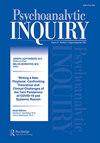The Origins of Modern Literary Theory in the Repudiation of Autobiographical Readings of Shakespeare’s Sonnets
IF 0.5
4区 心理学
Q3 PSYCHOLOGY, PSYCHOANALYSIS
引用次数: 0
Abstract
ABSTRACT For a century, prevailing literary theories have amputated authors from their fictional works, reducing characters to merely words on the page. Many of us who love reading literature are puzzled by the disconnect between our subjective assumptions about it and those of literary critics, who reject common-sense understanding of the vital role of the author, and of the interaction between our imagination and fictional characters. A major but unacknowledged reason for this counterintuitive trend has been efforts to buttress the traditional but increasingly dubious legend about who wrote the works of William Shakespeare. Since the late 1500s, there have been doubts as to the identity of the real Shakespeare. His name was often hyphenated as Shake-speare in early years, when hyphenated last names in England were rare then. But assumed names in plays were sometimes hyphenated. Sir Sidney Lee was one of the most prominent and influential Shakespeare scholars at the turn of the 20th century. He looked for biographical clues about Shakespeare in his Sonnets. But he quickly did an about-face in reaction to the bisexuality of these Sonnets. Lee’s reversal was pivotal in literary critics’ subsequent dogma that Shakespeare’s works, and fiction in general, need to be separated from the author. This irrational dogma was also applied to fictional characters, in part in reaction to reductionistic uses of psychoanalytic theory to “analyze” literary characters. The close study of this history may help free us from misconceptions about the real Shakespeare, and from misguided literary theory.从对莎士比亚十四行诗自传体解读的否定看现代文学理论的起源
摘要一个世纪以来,主流的文学理论已经将作者从他们的虚构作品中剔除,将人物简化为页面上的文字。我们中的许多热爱阅读文学的人都对我们对文学的主观假设与文学评论家的主观假设之间的脱节感到困惑,文学评论家拒绝对作者的重要角色以及我们的想象力与虚构人物之间的互动进行常识性理解。这种违反直觉的趋势的一个主要但未被承认的原因是,人们努力支持关于谁写了威廉·莎士比亚作品的传统但越来越可疑的传说。自15世纪末以来,人们一直怀疑真正的莎士比亚的身份。早年,他的名字经常连字符为Shake speare,当时连字符的姓氏在英国很少见。但剧中的假名有时会连字符。西德尼·李爵士是20世纪之交最杰出、最有影响力的莎士比亚学者之一。他在十四行诗中寻找有关莎士比亚的传记线索。但他很快就对这些十四行诗中的双性恋做出了改变。李的逆转在文学评论家随后的教条中起到了关键作用,即莎士比亚的作品和一般小说都需要与作者分离。这种非理性教条也适用于虚构人物,部分原因是对精神分析理论“分析”文学人物的还原论使用的反应。仔细研究这段历史可能有助于我们摆脱对真正莎士比亚的误解,以及被误导的文学理论。
本文章由计算机程序翻译,如有差异,请以英文原文为准。
求助全文
约1分钟内获得全文
求助全文
来源期刊

Psychoanalytic Inquiry
PSYCHOLOGY, PSYCHOANALYSIS-
CiteScore
1.00
自引率
33.30%
发文量
65
期刊介绍:
Now published five times a year, Psychoanalytic Inquiry (PI) retains distinction in the world of clinical publishing as a genuinely monographic journal. By dedicating each issue to a single topic, PI achieves a depth of coverage unique to the journal format; by virtue of the topical focus of each issue, it functions as a monograph series covering the most timely issues - theoretical, clinical, developmental , and institutional - before the field. Recent issues, focusing on Unconscious Communication, OCD, Movement and and Body Experience in Exploratory Therapy, Objct Relations, and Motivation, have found an appreciative readership among analysts, psychiatrists, clinical psychologists and a broad range of scholars in the humanities.
 求助内容:
求助内容: 应助结果提醒方式:
应助结果提醒方式:


